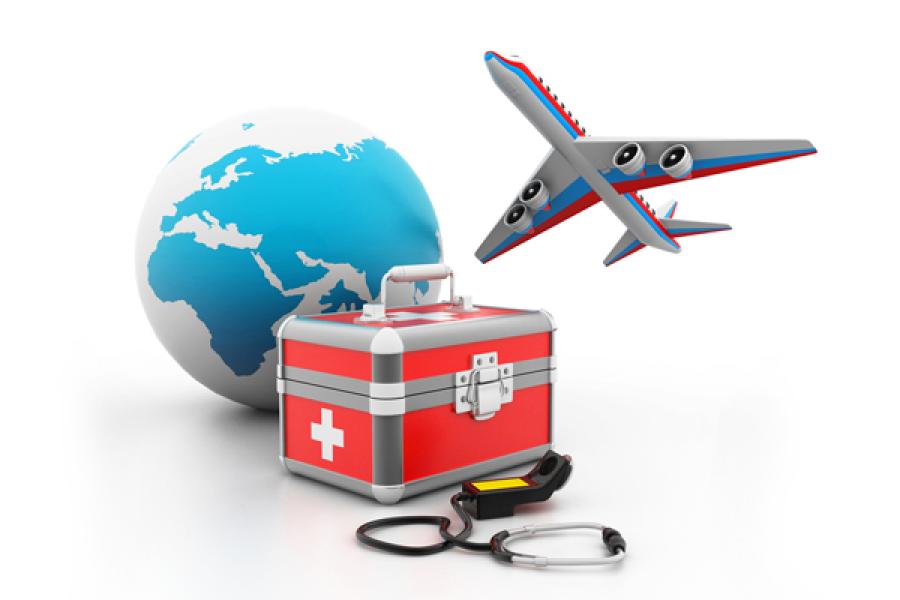4 things to know about India's next crown jewel, Medical Tourism
It is estimated that the volume of medical tourists worldwide could reach up to 5 million by 2016. Future of India's economic and healthcare could greatly depend on this vastly ignored area by the media.
Image: Shutterstock
India is a huge magnet for attracting foreign patients for medical treatments. With general tourism on the rise, it is estimated that the volume of medical tourists worldwide could reach up to 5 million by 2016, attracting additional visitors to the country.
Medical tourism, more broadly health and wellness tourism, refers to the industry in which people from across the globe travel to other countries to get medical, dental and surgical care, and at the same time, visit the local attractions of that country. I want to share some of the key highlights of medical tourism in India–the next crown jewel–that could shape the future of India’s economy and health care.
1) Medical tourism market is estimated to be valued at $ 4 billion. Health care tourism has been a key growth sector for more than a decade. Growing insurance market, strong pharmaceutical industry, cheap international travel, and quality health care are increasingly making India a preferred tourist destination. India hosts about 1.27 million tourists from countries such as the US, UK, and Canada in addition to visitors from neighbouring countries like Bangladesh, Sri Lanka, and China.
This market includes secondary players from the tourism industry who greatly benefit from visitors to India. The government estimates that the growth of health-related services will be more than 5 percent for the next 10 years and that should further attract more such visitors. Major corporations such as Tata, Fortis, Max, Wockhardt, and Apollo Hospitals have made significant investments in setting up modern hospitals and tourism-related services to cater to the new brand of visitors from abroad.
2) Tourists come to India for economic reasons and market attractiveness. Clearly, there are economic advantages for choosing English-speaking India for certain procedures. For example, a heart bypass procedure costs roughly $140,000 without any insurance in the US. The same procedure, however, costs only around $7,000 or Rs 3 lakh at one of India’s leading surgery centres. Procedures such as hip and knee replacement, face lift, and gastric bypass are far more affordable in India, including the cost of travel and accommodation, compared to the US. Moreover, these cosmetic procedures are not covered by most insurance providers in Western countries. India has many top-notch centres for open-heart surgery and paediatric heart surgeries which are equipped with the latest equipment that are on par with these Western countries. India is also acutely aware of the quality perceptions of its visitors; many Indian hospitals that cater to foreign tourists meet the requirements of US health standards like Food and Drug Administration and Joint Commission Accreditation for hospitals, hoping to fight this notion.
India is also home to a number of alternative medicine techniques such as Ayurveda, Sidha, Unani, Yoga, Acupuncture and Homeopathy which are very popular among foreigners. Such treatment opportunities give India the edge over its competitors like Thailand, Singapore, Malaysia, South Korea, and UAE.
3) Maharashtra, Tamil Nadu, and Delhi are top destinations for foreign visitors. Based on the government’s statistics of foreign tourists for 2010, more than 55 percent of visitors went to medical centres in these three states alone. Quality hotels, added tourism opportunities, and high-quality hospital care are the biggest reasons for this trend.
Source: Madras School of Economics
4) Infrastructure and better health-related investments will decide the future. While all trends point towards an increasing demand for medical services in India, some key factors will determine whether medical tourism becomes India’s next crown jewel, like our Information Technology industry. Here’s a list of some factors:
- Infrastructure investment by the government: The health industry as a whole has seen meagre growth as far as infrastructure is concerned. This has been primarily due to investments coming from the private players in the market. The government needs to step in and provide basic infrastructure services which will improve basic access to high quality centres.
- Reducing barriers for visiting India for medical purposes: Currently, foreigners need the “M-Visa” to come to India for medical purposes. Obtaining the visa is a huge barrier for medical tourists wanting to come here. India should consider offering visa-on-arrival type of services and partner with medical and tourism providers to streamline administrative processes.
- Raise quality standards to meet Western providers: Such partnerships will give confidence to foreign tourists to choose India over competitors like Malaysia and Singapore.
- Market health tourism in Western countries: With the ever-growing need for cheaper health care and complex health insurance offerings in the US and UK, Indian hospitals could target the neglected populations of those countries and draw them here to provide a cheaper alternative. This could be a boon for both the Western economies and India’s.
References:
- Government of India (2002), National Tourism Policy 2002, Ministry of Tourism, New Delhi.
- Mckinsey – CII (2002), Healthcare in India – The Road Ahead, Mckinsey & Company, 2002
- Government of India (2012), Economic Survey 2010-11, Ministry of Finance.
- “Health Tourism – Destination India”, India Brand Equity Foundation (2011)
The thoughts and opinions shared here are of the author.
Check out our end of season subscription discounts with a Moneycontrol pro subscription absolutely free. Use code EOSO2021. Click here for details.


